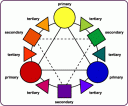Some aspiring beginner announces on a forum that he’s invented a new fly, asking for comments on the quality of construction and the style used.
… which brings the Wrath of The Horribly Offended onto his narrow shoulders. The first half dozen comments point out someone else’s fly his resembles, albeit minus the red tail, and then all original thought is ignored as various fanbois attribute the tie to their respective Sensei.
In the meantime the next great fly tier backpedals back into anonymity swearing never to show his work again.
Ours isn’t the only sport where the word “invention” is four letters. Perhaps variation or derivation is more appropriate – but with 200 plus years of fly tying already behind us has anyone really invented anything in the last 50 years?
Of course they have, only we have trouble admitting it.
Discounting the new flies that arrive with each synthetic, most of the natural materials like fur and feathers are well known and documented. We’ve wrapped, clumped, bound, spiraled, tamped, straightened, and parachuted most everything already.
Fly patterns have this enormous gulf of Gray, with rabid partisans perched on every outcropping just waiting to tee off on the unwary. Us well intentioned tiers duck and evade the unguarded phrase containing “new” or “invented” – and are reminded how easy it is to lift the lid off Hell Incarnate.
I figure there are three basic issues within the larger question of “new”, and these revolve around colors, styles, and method.
Changing the tail on a Black Gnat from black to chartreuse will rarely work up much emotion. With only the single change, it’s a variant of the Black Gnat, and should be named similarly. “Bob’s Black Gnat” is appropriate, as is “Yellow-tailed Black Gnat.” The issue is straightforward – do you wish to pay homage to the original, or do you wish fame everlasting?
As with all vanity, it’s an individual thing – and is probably the source of the foment when the issue raises itself in the media. In the most virulent posts – and ensuing comments – affixing your name to an existing variation is unworthy, even if you made the fly better.
… but if you’re already famous it’s okay, as witnessed by the Royal Coachman and its derivative the Royal Wulff.
Variations caused by style are similar. No one raises an eyebrow at a Parachute Adams – unless it’s introduced as Bob’s Killer Bug. Fingers start pointing, flames erupt and in the blink of an eye – the forum thread is in shambles, with the incensed participants labeling each other with even better names …
Fly tying styles have always incorporated the traditional patterns, as they’re already the product of many years of tinkering and refinement.
We don’t like to think in those terms, how the original fly may have been slightly different and bore a different name – but history is written by the victor, and the venerable Adams may have originated as Finkle’s Wilson, until some SOB added grizzly wings …
… and was vilified by anglers when he dared rename it.
Which neatly explains how difficult it is to trace the original recipe on the timeless patterns of yesterday, likely each author took the variant he fished as gospel.
Style can be incurred by materials as well as tying method. Polypropylene made us retie everything, and we gleefully discarded muskrat, fox belly, and beaver bodies … until we learned Poly fur was coarse, unforgiving, and didn’t float much better than our old fur. That didn’t stop us from putting “Poly” in front half the old standby’s, but as the material proved a false prophet the renaming ceased once it became less popular.
Bead head flies are another example of how a functional style begats variation. Somehow the addition of a heavy bead didn’t warrant renaming the Prince nymph, and we merely added “bead head” to distinguish the functional change.
We’ve seen numerous styles in the last 50 years, most have occurred since we mastered the petroleum polymers, like Nylon, Banlon, Antron, and Z-lon – and the countless synthetics that have been adapted from carpet fibers and the upholstery trade.
We’ve replaced chicken fibers with Microfibbets, wings with Polypropylene or Z-lon, swapped fur dubbing for Antron carpet blends, and did away with hackle entirely – or tried to … We’ve endured the Yorkshire Flybody hook, Swedish dry flies, thorax duns, Waterwalkers, No Hackles, and dozens of different surface film flavors that only young eyes can see.
We’re so busy attempting to replace the Catskill dry and standard nymph, that our failure to find a glossy synthetic equivalent may play a part of the angst displayed when policing derivations and variants.
Structural method also spawns flies as new. Advances in hook design or the debut of a lightweight gossamer can spawn new styles of tying the older flies, and inspire much creativity.
Parachute flies are a great example. Most contain the identical ingredients of the traditional fly, and like bead heads we’ve added “parachute” to the name with little fanfare and no resistance.
… and it’s only because the Czech’s have been consistently eating our competitive lunch that we haven’t complained of their adaptation of a scud style (hook and style) into a bonafide Czech Nymph.
… like Kaiser Soze – we’re terrified of angering them.
Fly tiers have always approached invention with trepidation. Our first halting steps were necessity rather than genius, and added a taint not soon forgotten.
A new tier usually takes the glossy plates of books and magazines as his first muse. Consumed with creativity he’ll often overlook materials in the original recipe that he’s missing. With the fly two-thirds complete another four letter word, substitution, rears its ugly head.
Even if a Light Cahill is completed with Green hackle tips for wings he’ll view it as a failed attempt, as it’s not the original pattern. Months later when he’s more comfortable with skills and patterns he makes a minor modification, perhaps to customize it for his watershed or local insects, and we chew his ass for blasphemy.
A strange dichotomy, on the one hand we’re intent on discarding the old, and are incensed by anything new derived of their tradition.
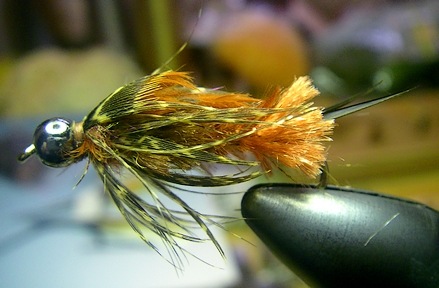 The Royal Coachman Nymph, and I invented it
The Royal Coachman Nymph, and I invented it
Later in a fly tier’s career it’s all about experimentals and variations of derivatives. After many years fishing you realize that traditional patterns are merely flies that have become popular, not that they’re better than everything else.
But all those test cases and oddballs are kept close to the vest. Metered out to strangers on the creek when you’re lucky enough to have something that’s better than most that afternoon, and the rest given a trial and buried into an overhanging tree limb or sunken log.
… and while the forum dwellers snarl at each other from the safety of their computer, attributing whatever appears as something their favorite author or fishing buddy tied first, half of them don’t tie at all – and the other half don’t tie well … which is most of the reason they’re not offering their flies for commentary.
Is it a new fly worthy of a name, whose pedigree can be traced to its originator? Usually not. Mostly they’re copies of copies whose original dressings were guessed at – contained frequent substitutions, which were fortunate enough to have their name and recipe contained in an early tome on fly fishing.
… and if its description involves naming a classic fly, then it’s a derivation regardless of what you call it.
Tags: fly tying, naming flies, Yorkshire flybody hook, Partridge hook company, Catskill dry, traditional fly patterns, fly fishing forums, Light Cahill, Royal Wulff, parachute flies, bead head, Czech nymphs



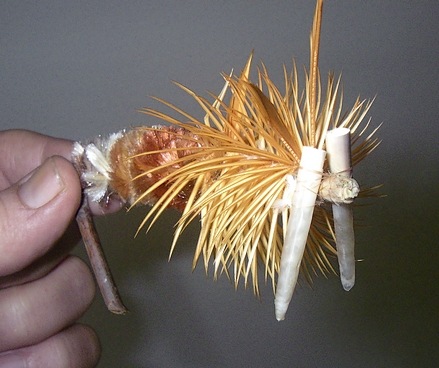
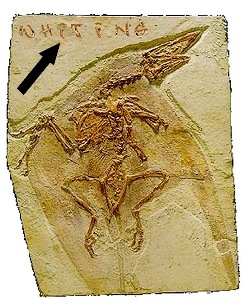 DNA testing proves the fur used was one of the many predatory cats that roamed the area, perhaps a lucky kill considering the flint spear points and unsophisticated hunting gear consistent with that era.
DNA testing proves the fur used was one of the many predatory cats that roamed the area, perhaps a lucky kill considering the flint spear points and unsophisticated hunting gear consistent with that era. The Royal Coachman Nymph, and I invented it
The Royal Coachman Nymph, and I invented it
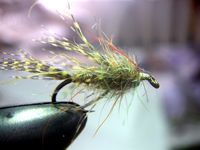 I mentioned the “Bird’s Nest” fly in last nights post, I had the privilege of knowing Calvert Bird years ago when it was created. Cal was one of the most singular and gentle fellows I’ve ever known, he had a weakness for coffee and wreath cake, which I exploited unmercifully.
I mentioned the “Bird’s Nest” fly in last nights post, I had the privilege of knowing Calvert Bird years ago when it was created. Cal was one of the most singular and gentle fellows I’ve ever known, he had a weakness for coffee and wreath cake, which I exploited unmercifully.